
Late last year, U.S. Immigration and Customs Enforcement (ICE) Office of Public Affairs staff members began working in partnership with the National September 11 Memorial & Museum in New York City to receive and display approximately a dozen loaned artifacts recovered from Ground Zero following the September 11, 2001, attacks against the United States.
ICE was created through passage of the Homeland Security Act of 2002, to serve as part of the country’s unified, national security response to the 9/11 attacks.
The new display is designed to honor those lost in the attacks and help strengthen the organization’s connection to the terrible events of that day.
(For ICE employees, the prevention of another 9/11 is the reason many go to work each day. The very existence of DHS, and ICE, is the result of the worst terrorist attack on American soil. Hear personal stories from ICE employees of how 9/11 affected their lives. Courtesy of U.S. Immigration and Customs Enforcement and YouTube. Posted on Sep 9, 2016.)
On the 17th anniversary of 9/11, ICE unveiled and dedicated the museum-quality display comprising the items on loan.
The exhibit is not open to the public, but situated in the Potomac Center North lobby of ICE headquarters in Washington, D.C., where it is visible to the ICE workforce whenever they enter and exit the building.
The memorial display consists of four custom-built, archival display cases and an archival, custom-framed United States flag that was recovered by ICE Homeland Security Investigations (HSI) Special Agent Scott Brown, a U.S. Customs agent at that time, from offices inside 6 World Trade Center (WTC), which was home to the U.S. Customs Agency’s New York Custom House.

Scott participated in the ICE unveiling and dedication ceremony on Tuesday, and shared his story of that fateful day.
Scott, a customs agent assigned to 6 WTC, and his team were in the field when the American Airlines Boeing 767 loaded with 20,000 gallons of jet fuel crashed into the North Tower of the World Trade Center in New York City.
Media word of the second plane, United Airlines Flight 175, flying into the South Tower, brought the nation to a shocked standstill, followed by desperate attempts of family members trying to reach their loved ones by phone in Manhattan.
“A real challenge of the day was communication,” explained Scott who was battling with his cell phone and radio to make contact with and account for each member of his team.
The cell phone network of New York City was rapidly overloaded by the mass call event, as traffic doubled over normal levels, in loads greater than they were designed to carry.
And the Office of Emergency Management (OEM) and Customs radio repeaters were located on top of the World Trade Center tower complex.
The horror took a catastrophic turn when the South Tower of the World Trade Center collapsed in a massive cloud of dust and smoke.
The structural steel of the skyscraper, built to withstand winds in excess of 200 miles per hour and a large conventional fire, could not withstand the tremendous heat generated by the burning jet fuel.
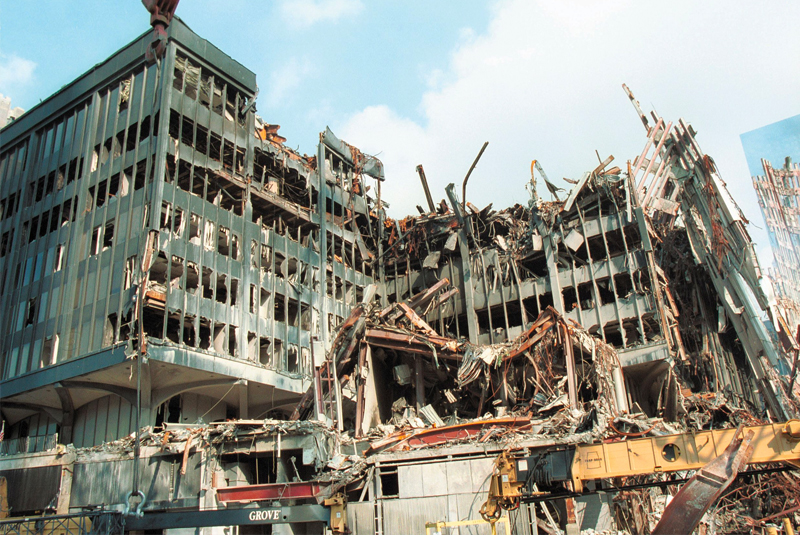
Once his team was accounted for, Scott and members of his group drove to as close as they could get to what would eventually be known as ‘Ground Zero,’ parking at One Police Plaza (1PP).
He explained stepping from the vehicle, a half mile from the World Trade Center, and seeing his foot disappear, buried in a pile of ash.
They hiked toward the Trade Center past Police, EMS and Fire Department vehicles that had been thrown about like life-sized matchbox cars.
The team came upon a group of about 400 other first responders desperate to help, after the north building of the Twin Towers collapsed.
“It was the most helpless moment of my life,” Scott said.
On September 14th, Scott was part of a security detail assigned to secure 6 WTC, which housed the Customs agency’s Seized Property Vault, containing critical evidence pertaining to cases all across New York.
The building was severely damaged when the towers collapsed, essentially ‘cored’ by the collapse of the North Tower (and was deemed irreparable and subsequently demolished during the massive clean-up effort at Ground Zero.)
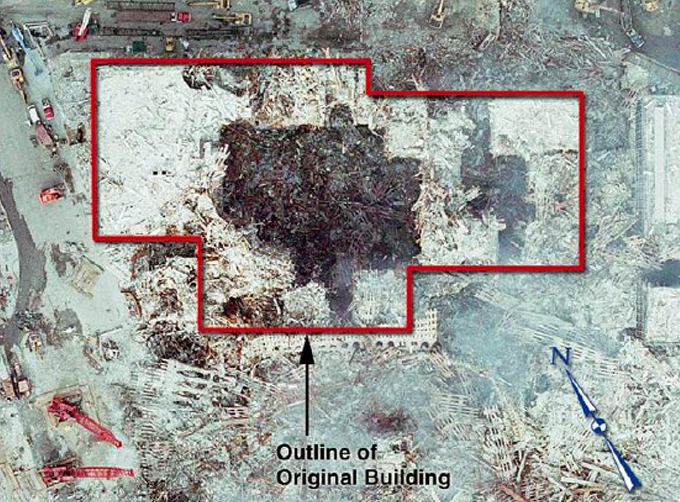
Essentially a giant hole where the streets collapsed below ground level, he and a team from FEMA, along with cadaver dog teams descended into the hole to attempt recoveries.
Scott was struck by the scene upon arrival of the building’s lobby.
When the attacks hit, the lobby was filled with commuters coming and going from the transportation hub below and scattered commercial businesses.
Such tragedy. So much loss of life.
Moving through the basement, then subbasements, the team smashed through windows of government cars to salvage whatever critical gear they could manage.
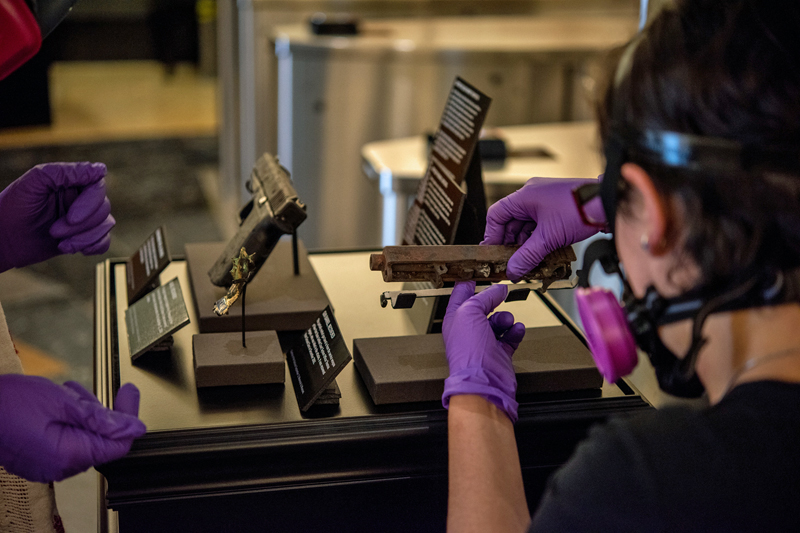
He explained to the FEMA team lead that he needed to access the offices above 6 WTC, but the building was so damaged and vulnerable to collapse, the leader agreed to accompany Scott, but refused to allow the team at his command to join them.
They made it to the fifth floor, scouring for valuable information and equipment from the fragile shell of a building, when Scott came upon two American flags.
One of the flags proudly stands in the new building that houses the New York offices for U.S. Immigration and Customs Enforcement Homeland Security Investigations (ICE HSI), formerly part of the U.S. Customs Agency.
The other Scott had handed to his boss, and had no idea as to what happened to it, until he got a call last week, explaining the second American flag was donated to, and became a part of the National September 11 Memorial & Museum permanent collection.
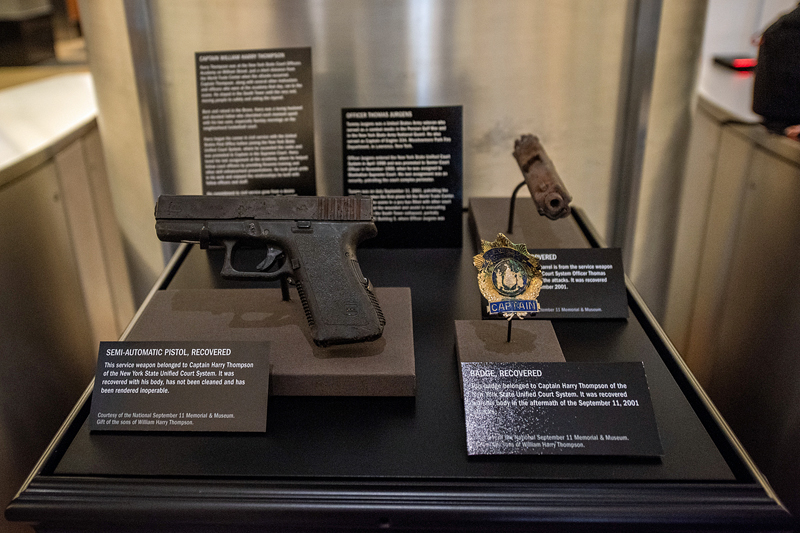
Scott was asked to speak on the 17th anniversary of 9/11, as ICE unveiled and dedicated the agency’s September 11 display of artifacts on loan to ICE Tuesday, and share on the significance of his find, in the midst of the deadliest attack in New York City’s history.
(More than 60,000 items make up the 9/11 Memorial Museum’s unparalleled collection of artifacts, chronicling personal accounts of both survivors and those killed on 9/11. Executive Vice President of Collections and Chief Curator Jan Seidler Ramirez shares how her team works with loved ones, survivors and others to bring together these important objects for museum visitors and future generations. Courtesy of the 9/11 Memorial & Museum and YouTube. Posted on Nov 9, 2017.)
In addition to the U.S. flag recovered from 6 WTC, other items on loan include:
-
A service weapon and badge recovered with the body of Captain Harry Thompson of the New York State Unified Court System
-
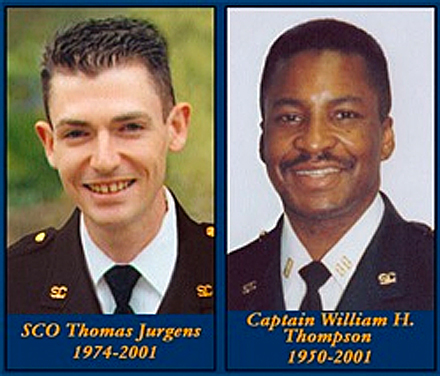 A recovered U.S. Customs Service stress ball
A recovered U.S. Customs Service stress ball -
The partially melted gun barrel belonging to Officer Thomas Jurgens of the New York State Unified Court System.
-
Various steel and concrete fragments recovered from Ground Zero and donated to the 9/11 Museum’s permanent collection.
Staff members from the National September 11 Memorial & Museum traveled from New York to Washington in early September to work with ICE personnel to professionally mount and install the objects in preparation for the agency’s September 11 remembrance and unveiling ceremony.
The Terror attacks of September 11th killed 2,996 people, injured over 6,000 others, and caused at least $10 billion in infrastructure and property damage.
Even now, 17 years later, agents, firefighters, law enforcement officers, EMS and other First Responders are dying of 9/11-related cancer and respiratory diseases.
(After risking their lives to help others on September 11, 2001, more than 7,500 first responders have developed some form of cancer. Courtesy of NBC News and YouTube. Posted on Sep 9, 2018.)
More than 7,500 emergency responders, recovery and cleanup workers, and volunteers at the three Sept. 11 crash sites have been diagnosed with various forms of cancer, according to the World Trade Center Health Program, which is administered by the U.S. Centers for Disease Control and Prevention.
Scott said that the “fear of 9/11-related cancers hang over all of us, that signed up to work the recovery.”
At the ceremony he met with a number of people that he worked with during those tough days, and said it was comforting to see them.
Many more are now gone, from disease and illness related to the carcinogens they were exposed to while sifting through landfills looking for evidence, and a thousand other tasks that needed to be done, in the days that followed.
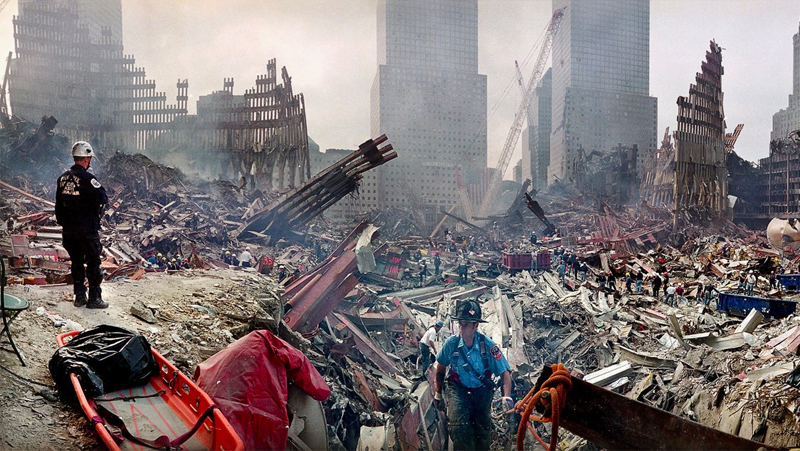
“It’s tragic, and heartbreaking, but we live with it every day.”
He shared what he called his ‘screwed up psychology’ of September 11th.
“I did my job. If I die because of it, so be it. But I don’t want to give those who did it, another victim.”
“What ICE did today, by working with the National September 11 Memorial & Museum and bringing the display to ICE’s Washington D.C. headquarters is very important.”
“Having these items here to see and experience, especially for those agents that came after is important.”
“They are helping us to remember where we came from, how ICE came to be, and a reminder of WHY we do this job.”
(Tribute in Light is a commemorative public art installation first presented six months after 9/11 and then every year thereafter, from dusk to dawn, on the night of September 11. It has become an iconic symbol that both honors those killed and celebrates the unbreakable spirit of New York. Courtesy of the 9/11 Memorial & Museum and YouTube. Posted on Sep 6, 2018.)
Learn More…
Sept. 11 Still Killing FBI Agents & First Responders (Learn More, Multi-Video)
















